Lewis’s Woodpecker (Melanerpes lewis) In Flight, photos by Larry Jordan
Driving home from work last week I finally saw my first Lewis’s Woodpecker (Melanerpes lewis) of the fall. Lucky for me, these beautiful and unusual woodpeckers can be found nearly year round in the oak savannah along the road I travel daily. I consider myself extremely blessed as some folks have to travel hundreds of miles to see a rare individual bird at someone else’s feeder.
The truth is that Lewis’s Woodpeckers, named after the famous explorer Meriwether Lewis of Lewis and Clark fame a few years after being discovered in 1805, are found in the United States mainly west of the great plains (range map courtesy of Terry Sohl at South Dakota Birds).
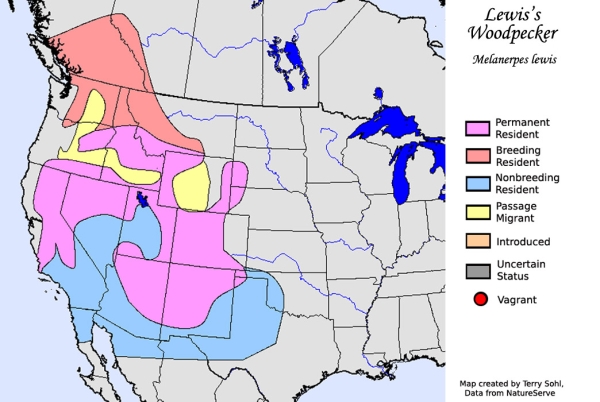
I say they are unusual woodpeckers because they spend the majority of their foraging time fly catching, usually making them very easy to spot.
Being that I’m always on the lookout for birds, Lewis’s Woodpeckers make themselves obvious by flying up from a high perch, usually the top of a tree or snag, snatching an insect and circling back around to their perch.
Seeing this behavior on the road from afar last week made for easy identification. However, when I reached the area where I had seen the birds flying, I was surprised to find a flock of about a dozen birds perched on a snag (click on photos for full sized images).
Apparently during fall migration large flocks may form as the birds travel to their wintering grounds, arriving in Northern California in mid-September to mid-October1.
I wanted to record their fly catching aerial maneuvers but it was the hottest part of the afternoon and this flock seemed to be resting. You can hear their call in the first few seconds of this video.
httpv://youtu.be/3ojbQqLo5cA
Lewis’s Woodpeckers will also perch on poles where they scan almost continuously for insects between fly-catching bouts1.
This bird was scanning for any morsels it could find from atop this telephone pole.
Giving me an excellent photo op!
You gotta love those colors with the pinkish belly, gray collar and dark red face offsetting the greenish-black head, wings and tail.
Lewis’s Woodpeckers are opportunistic feeders. They not only hawk insects from perches when they are available, they will glean insects from tree trunks and branches as well as forage in bushes or on the ground.
This bird grabbed an insect from the road right in front of me before flying up to the pole where it consumed the bug.
But they also feed on acorns and other nuts (like almonds) and fruit, depending on the season and availability of the food. I watched several of these woodpeckers foraging in the nearby large oaks, flying over my head with acorns in their beaks.
Unlike the Acorn Woodpecker that stores the acorns whole in granary trees, Lewis’s Woodpeckers will shell the acorn and break it into pieces, eating it right away or storing the mast in natural cracks and crevices in tree bark or in poles1like this one.
httpv://youtu.be/SkjGaXBFwKg
This individual appears to be storing mast for later
In fall and winter, single birds or pairs of birds develop and defend mast stores; these stores form a primary contribution to diet until spring, when non-wood-boring insects become abundant1.
This bird looks as if it’s worried about me knowing where its cache is.
Lewis’s Woodpeckers are a cavity nesting species, excavating the trunks or large branches of dead or decaying trees. They nest primarily in May, June and July, the time of year when they seem to disappear from the oak savannah in my neck of the woods.
I have asked some of the long time birders in Shasta County if they know where the Lewis’s Woodpeckers go to breed locally in the summer. The feeling is that they go to higher elevations in the summer to breed. My hypothesis is that there is a later hatch of non-boring and flying insects in the higher elevations that give them a better breeding environment during those hot months.
Next year I plan on seeking out the answer to this question of where the Lewis’s Woodpeckers go during the summer months.
Until then I will enjoy watching them hawk insects from the tree tops and count them on Christmas Bird Counts!
This post has been submitted to Bird Photography Weekly #162. Go check it out!
References: 1Birds of North America Online


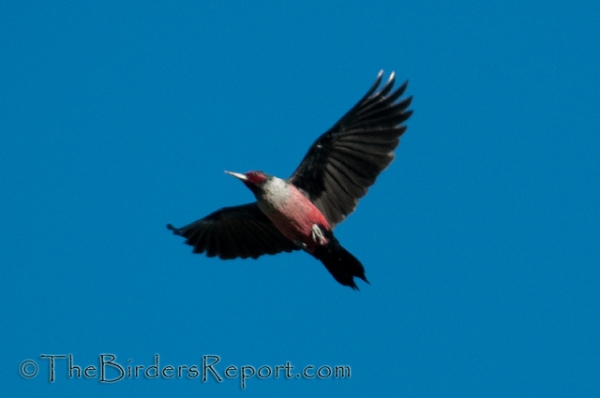
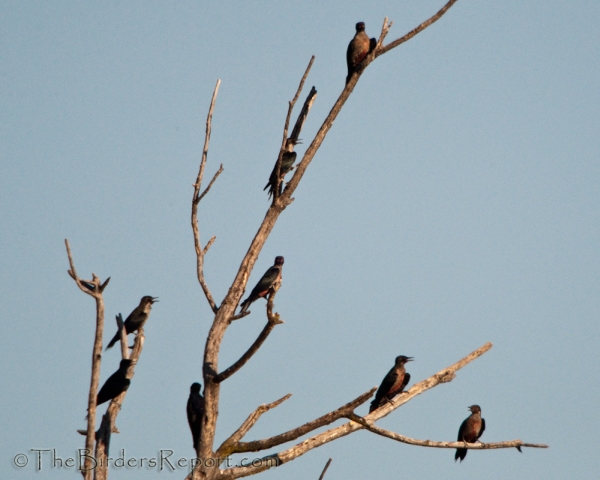
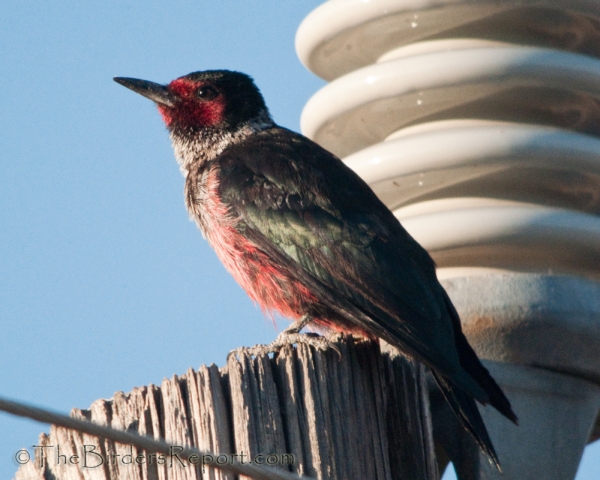
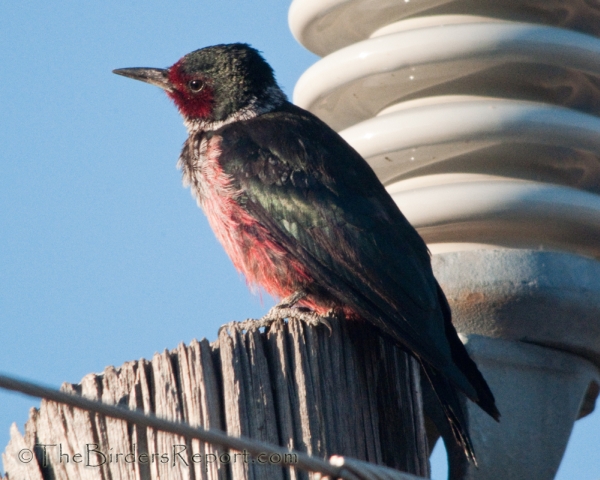
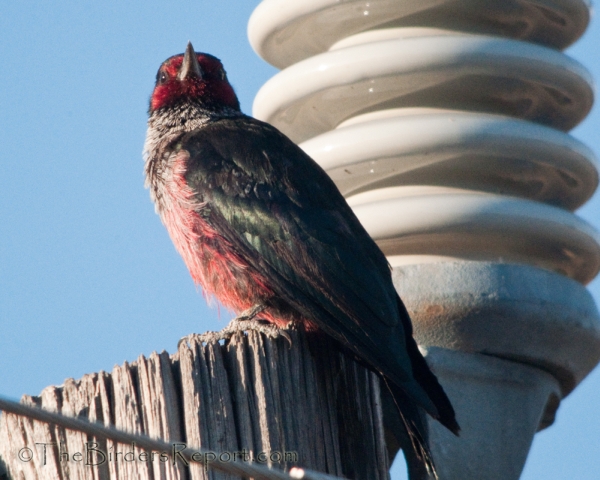
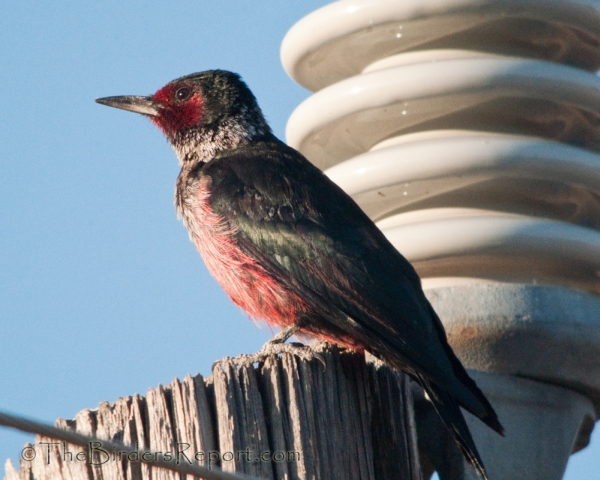
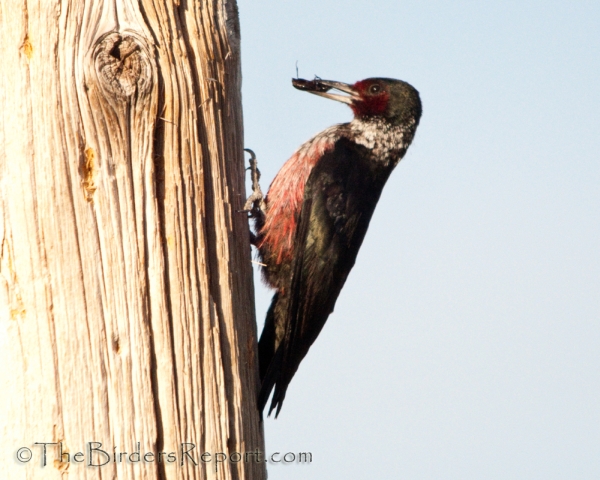
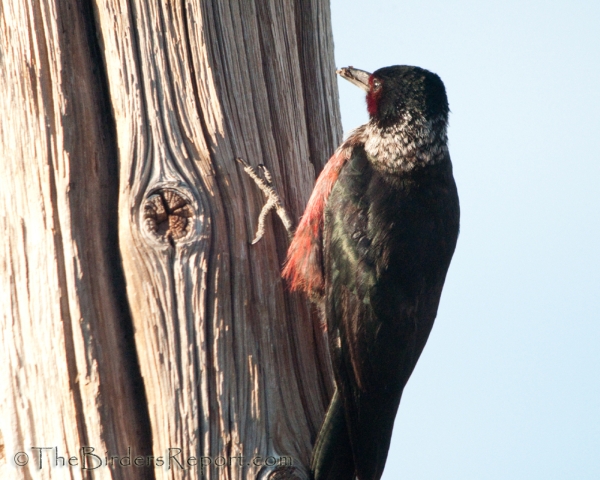
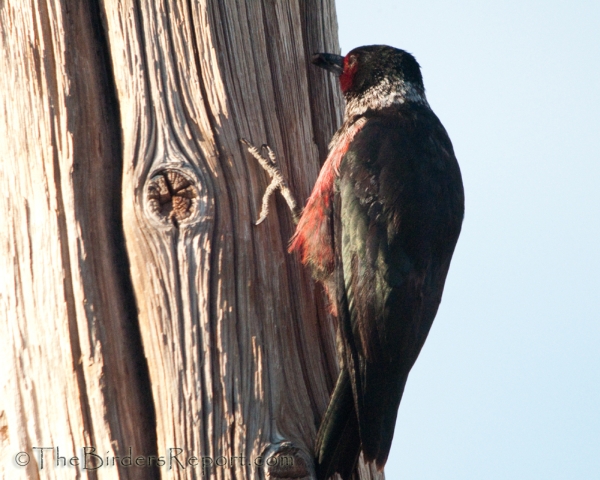
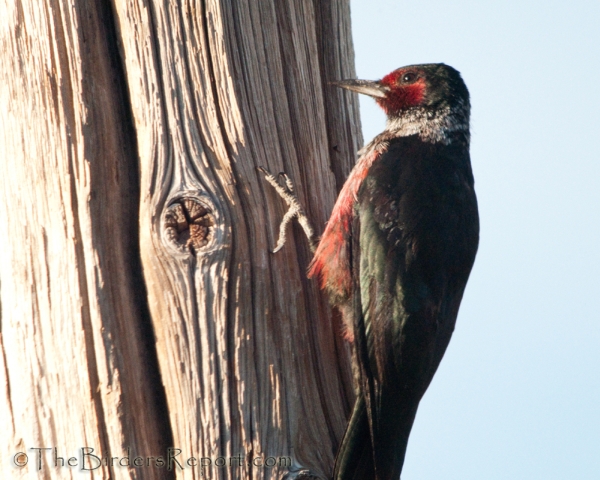
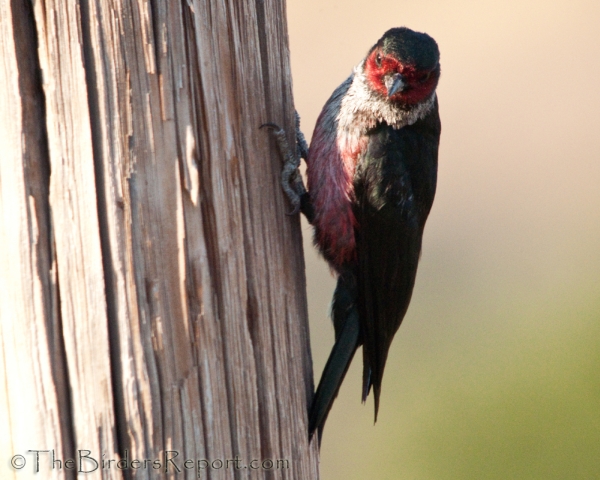
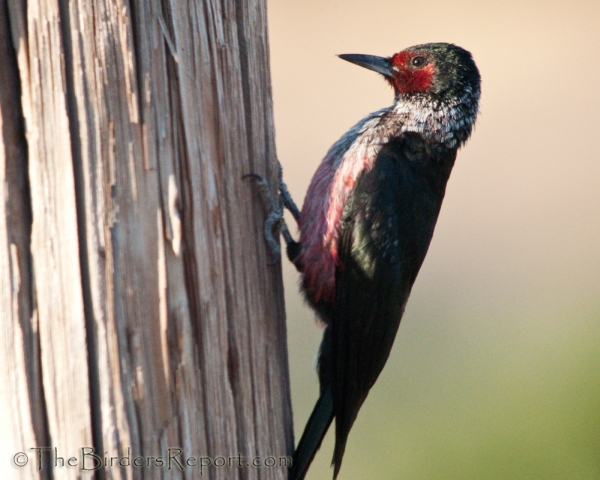











Great post. This is the best “birder” blog EVER! Thanks for sharing your great photos and great knowledge of birds. I hope you’ll make it to SW Florida sometime.
Wonderful post Larry! Lewis’s are definitely one of the coolest woodpeckers. Great photos!
really wonderful coloration on those birds! rather exotic looking! 🙂
Ive never seen a picture of such a big Lewis’ flock together…great stuff!
Awesome photos Larry!
And to think I was happy seeing one Lewis’s Woodpecker in New York. Great pics, great post, and great information!
Thanks so much for this useful information Larry. That photo of the flock is pretty stunning.
@Steven thank you very much. I definitely will make it to Florida some day!
@Robert thanks. Cool they are!
@Theresa they are rather exotic for a North American species 😉
@Steve I never saw a flock of Lewis’s before either
@Jeremy thanks!
@Corey thank you very much. I got great inspiration from your Lewis’s Woodpecker post
@James I really enjoyed filming them and watching their interactions on that snag
A family of Lewis’s woodpeckers lives in a Ponderosa pine tree next to my property. The parents brought them to our birch tree and all day long I watch the babies eating on the tree trunk. They are quite simply amazing!